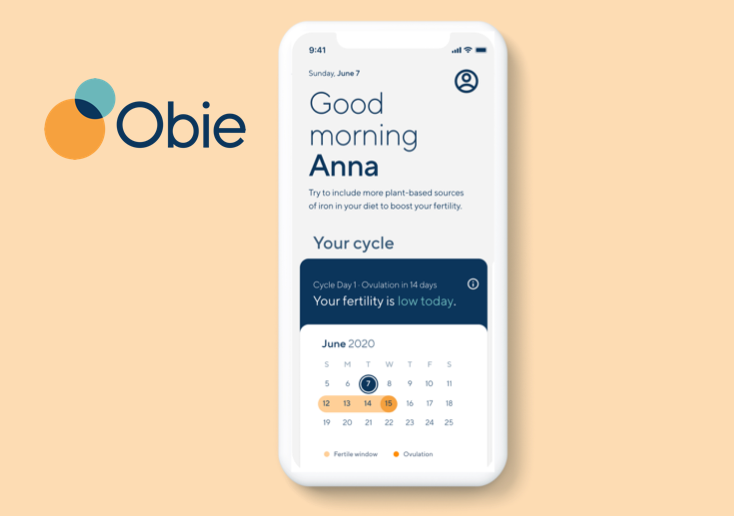What is a menstrual period?
Menstruation or the menstrual period refers to the monthly bleeding caused by the shedding of the lining of the uterus (endometrium). Even though this bleeding occurs in regular monthly cycles (28-29 days), the actual number of days in most menstrual cycles can be anywhere between 21 and 35 days.
Get personalized insights when you log your symptoms and track your cycle in the Obie app.
Understand the science of your body
What is a menstrual cycle?
The menstrual cycle is different from a menstrual period. A menstrual cycle is the time period between the first day of a menstrual period or bleeding until the last day before the next menstrual bleeding. Having regular menstrual cycles is a sign that important parts of a person's uterus and ovaries, especially ovulation are working normally. Regular menstrual cycles and regular menstrual bleeding usually indicate regular ovulation.
Do you know when you're most likely to get pregnant each month? Test your fertility knowledge with our new quiz!
A menstrual cycle is counted from the first day of the menstrual bleeding or period to the first day of the next period. The average menstrual cycle is 28 days long, while menstrual bleeding usually lasts 3-5 days. Cycles can range anywhere from 21 to 35 days in adults and from 21 to 45 days in young teens.
The rise and fall of levels of hormones and ovulation during the month control the menstrual cycle.
Because menstruation is a function of regular ovulation, it begins in puberty and ends with menopause, when ovulation stops. The first day of bleeding is counted as the beginning of each menstrual cycle (cycle day 1 or CD 1) and the menstrual cycle ends on the day before the next menstrual period begins. Menstrual cycles normally range from about 21 to 35 days. Only about one in eight cycles are exactly 28 days.
Abnormal cycles (cycles that are more than 4-5 days different from one month to the next) are usually an indication that you do not ovulate normally, or that you do not ovulate at all, that your hormones may be not normal.
What are the phases of the menstrual cycle?
The menstrual cycle is typically separated into three phases:
- Follicular phase
- Ovulatory phase
- Luteal or corpus luteum phase
What is the follicular phase?
The follicular phase is the phase that begins with the first day of menses (Cycle Day 1). During the early part of this phase, the pituitary gland increases the release of follicle-stimulating hormone (FSH) and luteinizing hormone (LH). FSH stimulates the growth of numerous follicles in the ovary as well as the release of estrogen from the ovary. The estrogen causes the thickening of the endometrium. Generally, only one of the follicles matures and gets to release the ovum (egg) contained within. LH is secreted in a sudden burst mid-cycle (around Cycle Day 13-14) and stimulates the release of the ovum from the mature follicle in the ovary.
What is the ovulatory phase?
The ovulatory phase lasts usually only one to two days. During this phase, the ovum is released from the mature follicle — in a process called ovulation — because of the increased presence of the hormone LH. Ovulation generally occurs in the 16 to 32 hours following follicle exposure to increased LH levels. The follicle ruptures and releases the ovum (egg) into the funnel-shaped end of the fallopian tube. The ovum then makes its way down the tube and into the uterus, hoping to get fertilized along the way.
What is the luteal phase?
The luteal phase usually lasts 12-16 days. It is the time following ovulation until the next menstrual period. Following ovulation, the follicle that ruptured and released the egg closes and becomes a corpus luteum. The corpus luteum produces increasing levels of progesterone, preparing the endometrium for the implantation of a fertilized egg. If pregnancy does not occur, the corpus luteum breaks down and the levels of progesterone and estrogen decline. This results in the breakdown of the endometrium and menstrual bleeding occurs. If pregnancy does occur, the placenta begins to produce human chorionic gonadotropin (hCG). It is the top and middle endometrial layers that are shed during the menstrual period. The bottom (innermost or deepest) layer remains, and prepares once again for implantation in the next cycle.
Read More:
Is Your Menstrual Cycle Normal?
Signs of Ovulation
Tracking My Period Is Annoying, Do I Have To Do It?



